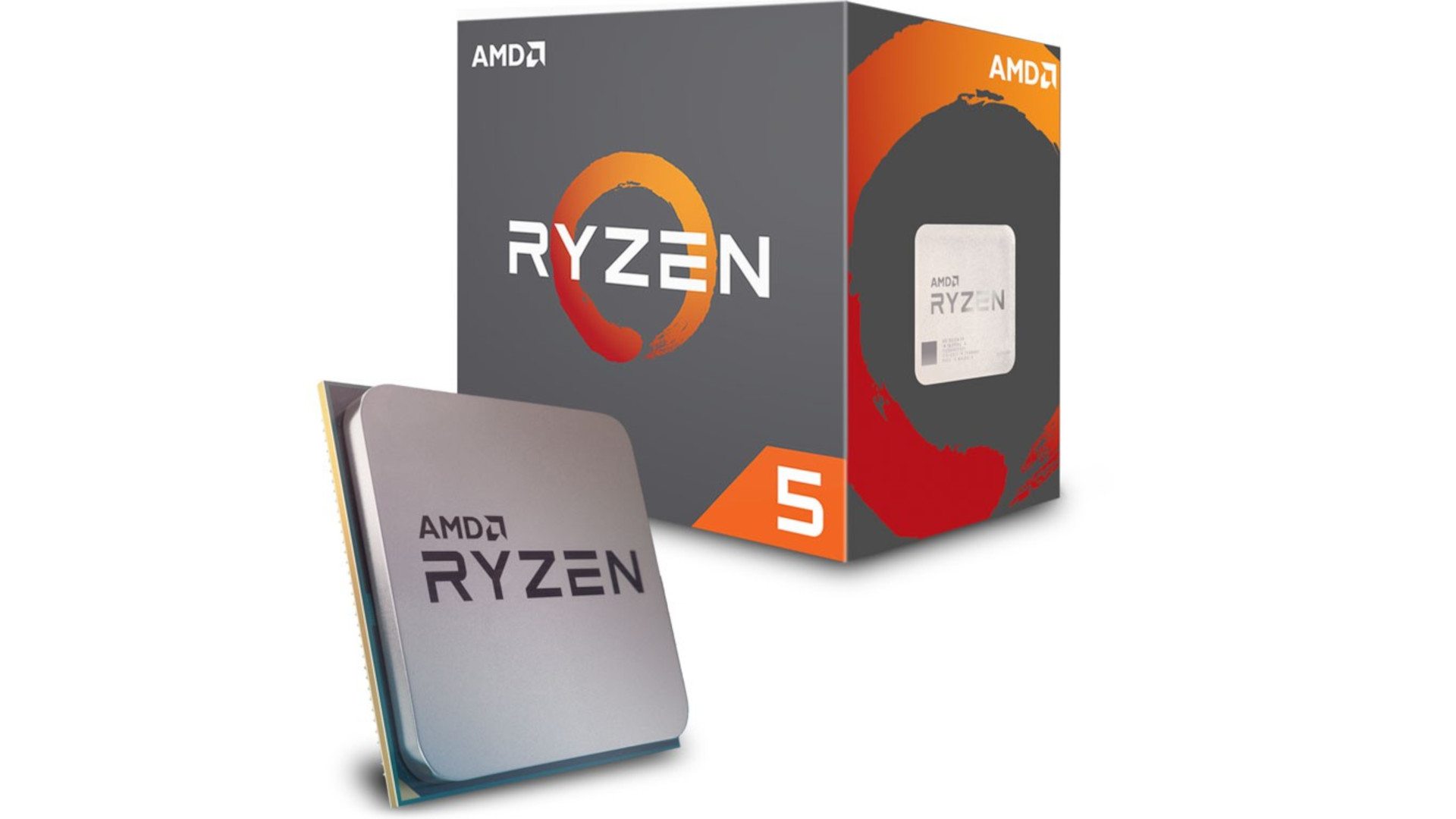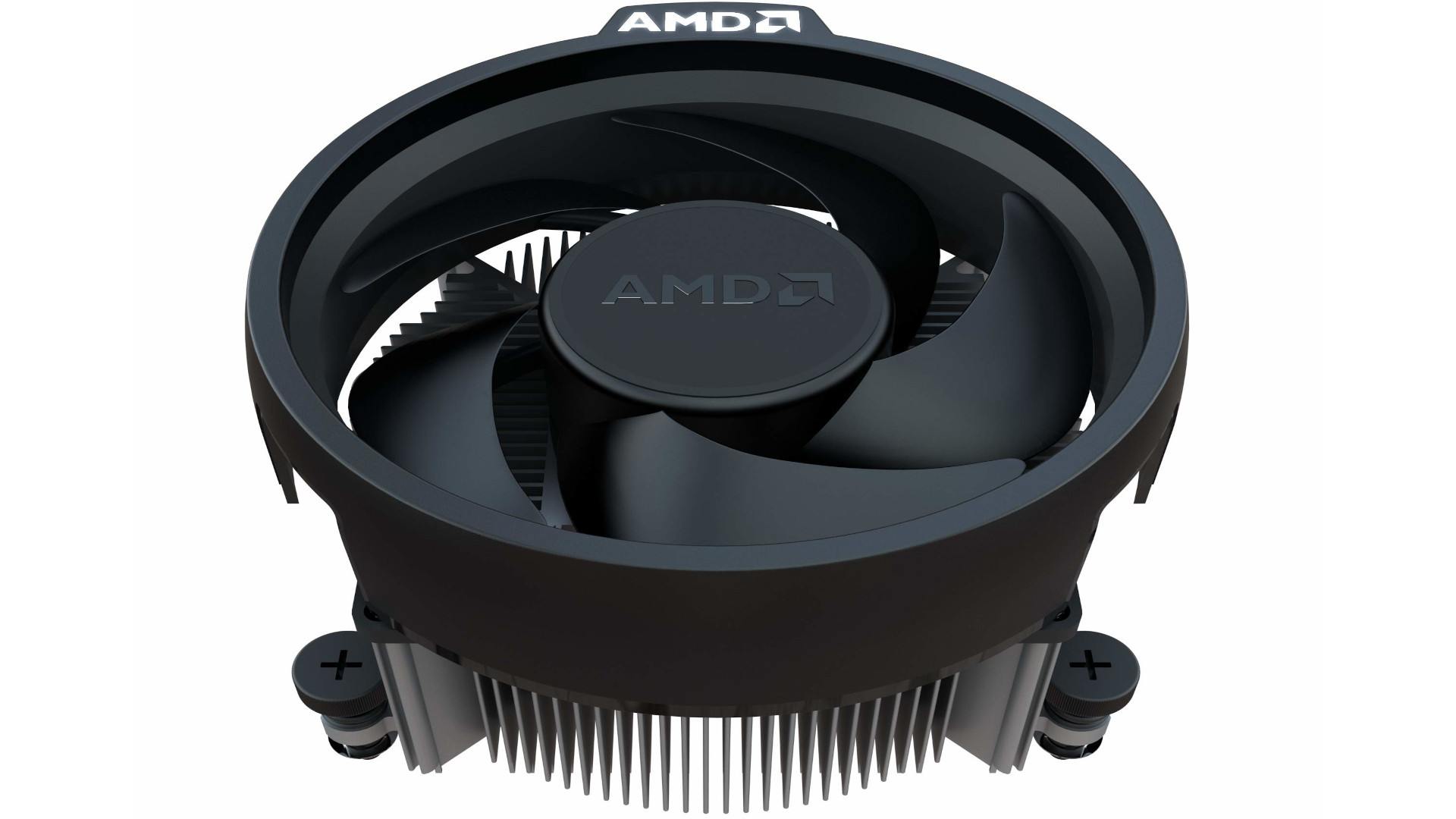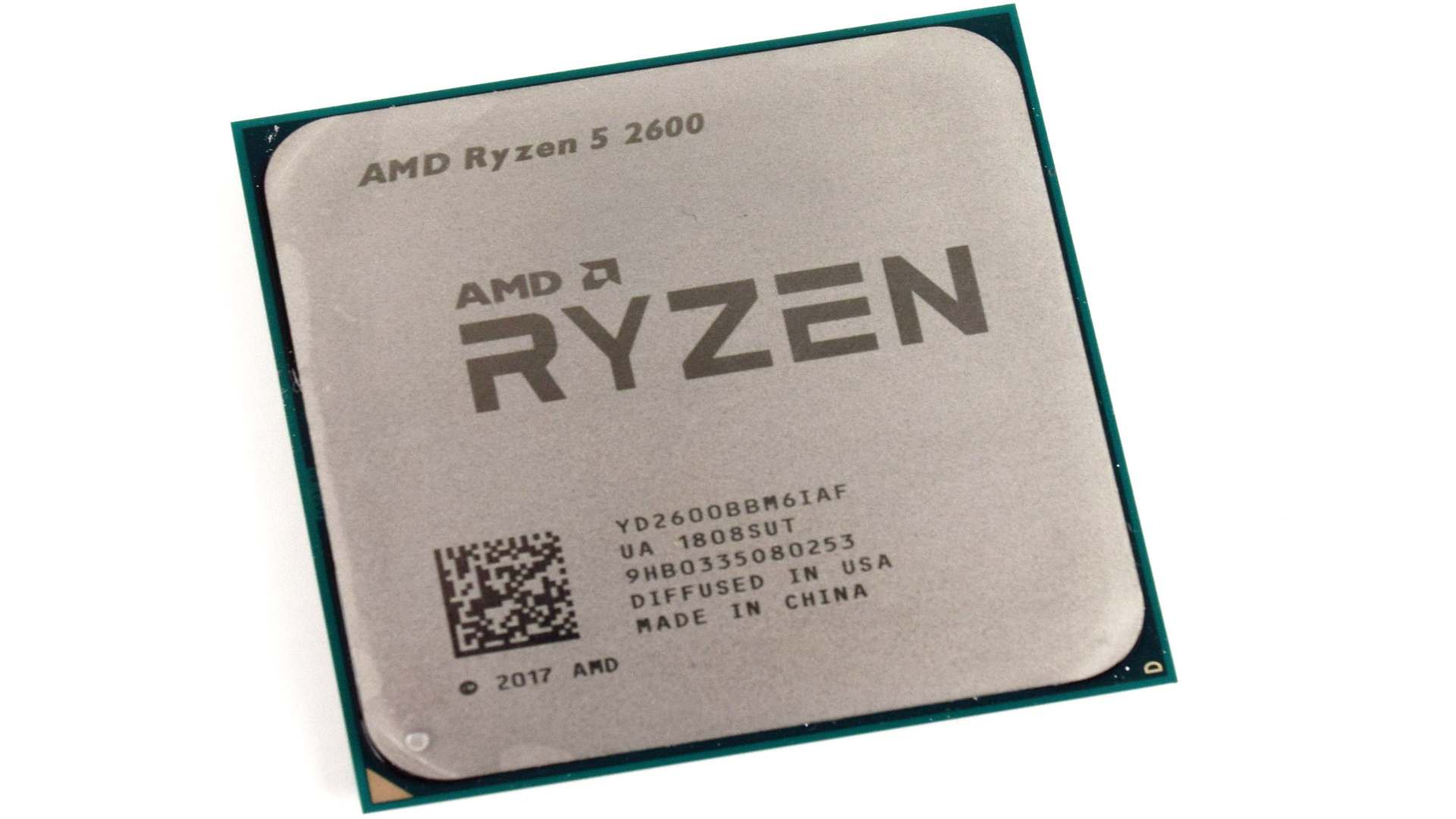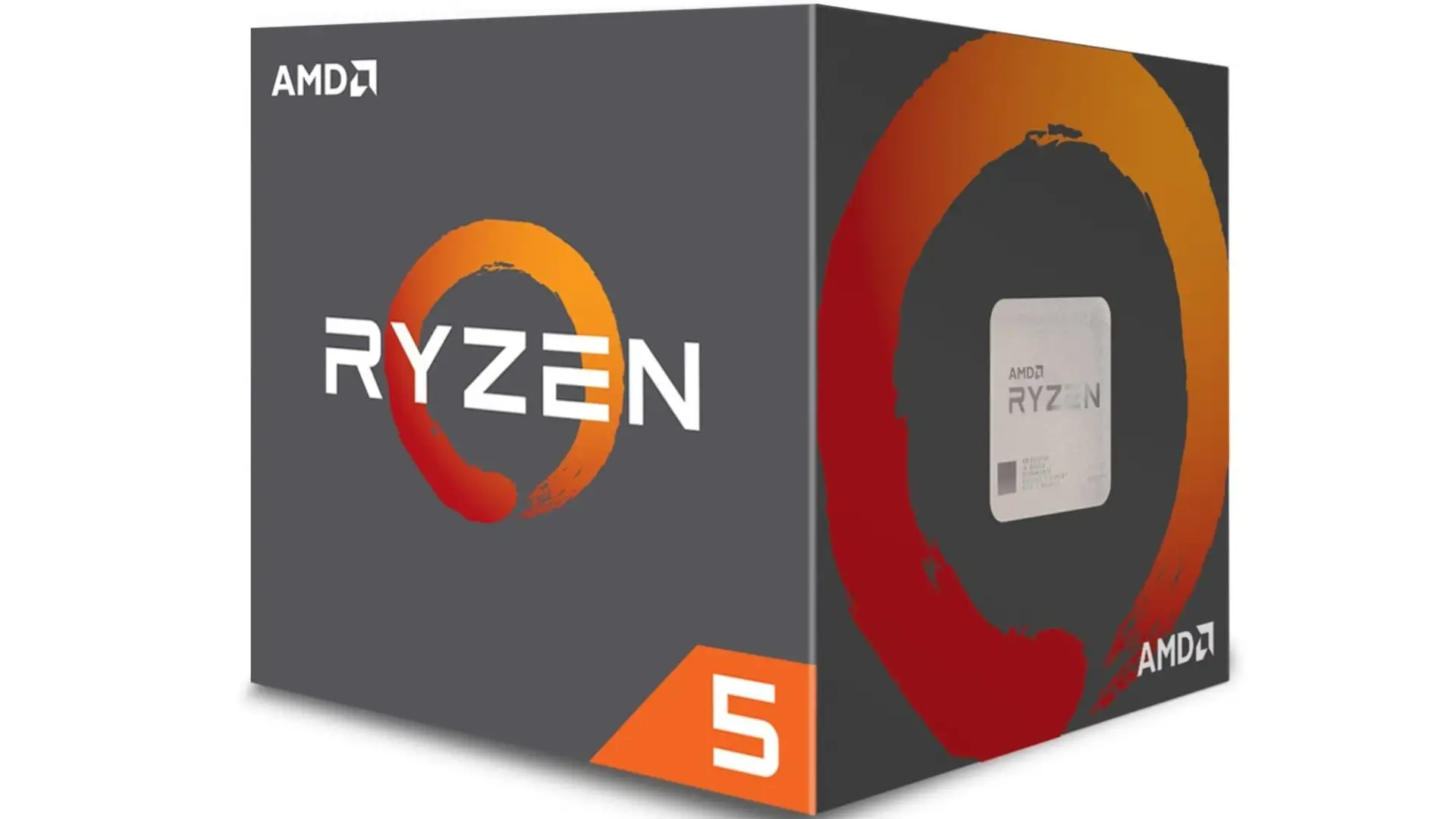The AMD Ryzen 5 is what I like to think of as the perfect midrange processor for most users. Unless you intend to undertake some chores that are more demanding and play games, it’s unlikely that you’ll need more performance than what’s offered, but for the majority of users, it’s more than enough. For too long, the Core i5 series maintained the top spot, but AMD’s second-generation 2600 is out to change that with some ruthless upgrades.
The X470 chipset was introduced along with this most recent generation AMD processors, which is a part of the Ryzen 2000 series. Zen+ features better DDR4 RAM support, decreased memory latency, a 12nm manufacturing process, Precision Boost 2 and XFR2 technologies, StoreMI for consolidating many drives into a single volume, and the ability for each unit to clock much higher than the preceding range. It’s all quite exciting, which makes the Ryzen 5 family and the 2000 Ryzen series, in particular, rather alluring for system builders.
As part of AMD’s ongoing drive into the mid-tier consumer market, three new Ryzen 5 processors were introduced. The Ryzen 5 2600X is just faster than the Ryzen 5 2600 while the more cheap Ryzen 5 2400G features an integrated Vega GPU. It makes more sense to save a little money by purchasing the non-X model of the 2600 and have some fun with core multipliers if you intend to overclock the processor anyhow.
All AMD processors have the added benefit of being unlocked. You’ll be able to push the AMD Ryzen 5 2600 considerably beyond its 3.9 GHz boost maximum, making it ideal for PC builders and tweakers that appreciate getting the most out of their components. Although the integrated Wraith fan (yep, AMD includes good cooling with the CPU) can withstand a little overclock, we were able to run our processor at 4.2 GHz with ease when using water cooling.
AMD Ryzen 5 2600 Specifications

The AMD Ryzen 5 2600 from AMD has six cores and can handle two threads per core, exactly like the more expensive Ryzen 5 2600X from the same manufacturer. However, given that it is supposed to be $30 less expensive, the 2600 runs at lower base and boost frequencies than the X-class device.
Despite the 2600’s slower performance, it does use higher clock rates than AMD’s Ryzen 5 1600. Don’t let this deter you too much. Additionally, it has a well-known unlocked ratio multiplier for overclocking. The 2600 is quicker than anything AMD has ever sold for $200 (on release), so you can be sure of that.
It’s only unfortunate that the AMD Ryzen 5 2600 comes with a 65W Wraith Stealth heat sink/fan combo rather than the 95W cooler AMD included with Ryzen 5 1600. The new chip’s overclocking capability is unquestionably constrained by the enticing thermal solution, despite being fine for stock frequencies. Value hunters who expect to match Ryzen 5 2600X by making some minor adjustments are likely to be let down.
The 2600X was selling at a discount when we published this, narrowing the difference between the two chips to $20, making things worse for Ryzen 5 2600. For that modest additional cost, the 2600X performs better out of the box and comes with a stronger 95W cooler to match its TDP. Our opinion is that the Ryzen 5 2600X is a worthwhile upgrade if you aren’t looking for low power.
All Ryzen 2000-series CPUs can run on motherboards with the X470 or 300-series chipsets. On platforms from the value-oriented B-series, you can even overclock the new chips. Although cheaper 400-series chipsets aren’t yet available, we anticipate that they will provide a more cost-effective choice for enthusiasts wishing to customize 2000-series Ryzen CPUs.

AMD Ryzen 5 2600 supports DDR4-2933 speed memory. Just keep in mind that you may only install single-rank modules in a maximum of two slots to receive such data speeds. Even then, a motherboard with six PCB layers is necessary for stable operation at 2933 MT/s.
The AMD Ryzen 5 2600, like all versions in the 2000-series, includes StorMI Technology, a software-based tiering solution that combines the speed of an SSD, 3D XPoint, or even up to 2GB of RAM with the low cost and high capacity of hard drives.
AMD Ryzen 5 2600 Specs
| Platform | Boxed Processor |
| # of CPU Cores | 6 |
| Base Clock | 3.4 GHz |
| L3 Cache | 16MB |
| Unlocked for Overclocking | Yes |
| Thermal Solution (MPK) | Wraith Stealth |
| *OS Support | Windows 11 – 64-Bit EditionWindows 10 – 64-Bit EditionRHEL x86 64-BitUbuntu x86 64-Bit |
| Product Family | AMD Ryzen™ Processors |
| # of Threads | 12 |
| L1 Cache | 576KB |
| Default TDP | 65W |
| CPU Socket | AM4 |
| Max. Operating Temperature (Tjmax) | 95°C |
| Product Line | AMD Ryzen™ 5 Desktop Processors |
| Max. Boost Clock | Up to 3.9GHz |
| L2 Cache | 3MB |
| Processor Technology for CPU Cores | 12nm FinFET |
| Thermal Solution (PIB) | Wraith Stealth |
| Launch Date | 04/19/2018 |
AMD Ryzen 5 2600 Performance & Tests

Even though simulated benchmarks scale well with more powerful hosts, those improvements aren’t necessarily translated into better game performance. Instead, these benchmarks provide us with a reliable indicator of the potential horsepower of gaming engines.
Similar to many contemporary video games, VR tends to favor per-core performance, therefore frequency and instructions per clock throughput rule supreme in measuring the system’s capacity to run top VR HMDs.
A stock AMD Ryzen 5 2600 is a significant upgrade over the Ryzen 5 1600 from the previous generation. Additionally, tweaking moved it ahead of Intel’s Core i5-8400.
Due to AMD Ryzen 5 2600 six cores, we didn’t anticipate it to achieve record-breaking performance in the DX12 and DX11 CPU tests. However, in some tasks, its capacity to run 12 threads simultaneously outperforms Intel’s hexa-core Core i5 processors. While the Core i7-8700K with Hyper-Threading defeated the 2600, Ryzen 5’s more threads outperformed the Core i5-8400 on par with its price. Additionally, overclocking made the AMD Ryzen 5 2600 more competitive in both CPU benchmarks.
In Ashes of the Singularity: Escalation at stock settings, the Ryzen 5 2600 performed better than the Core i5-8600K and -8400. However, all three CPUs produced 99th percentile frame rates that were comparable, indicating equal smoothness. Once we spent the time tuning it, the Ryzen 5 2600 performed nearly identically to the Ryzen 5 2600X.
The AI test for Civilization evaluates playability in a turn-based strategy game and favors per-core performance.
A recent game update for Civilization VI brought in a number of new features, but it also rendered our earlier benchmark results useless. We saw some modifications in the general hierarchy and a slight increase in average turn times. This test still gives Intel’s designs the advantage.
In light of the relatively little changes between processors, Ryzen 5 1600 was significantly behind the competition. At factory settings, Ryzen 5 2600 helped to remedy the situation and even outperformed AMD’s Ryzen 5 1600X.
Final Thoughts on AMD Ryzen 5 2600

As our benchmark findings indicated, the overclocked Ryzen 5 2600 and tweaked Ryzen 5 2600X both offer highly competitive gaming performance when combined with GeForce GTX 1080. The Core i5-8600K from Intel, which lacks a cooling solution, necessitates a Z-series motherboard for overclocking, and costs nearly $70 more than the AMD processor, performs poorly versus the 2600.
The Core i5-8600K offers greater frame rates than any other Ryzen 5/Core i5 CPUs if you intend to overclock it. The differences between processors, however, become less significant as you push for higher resolutions and more exacting detail settings.
Is AMD Ryzen 5 2600 worth it?
AMD Ryzen 5 2600 has six cores and can run two threads per core, exactly as the company’s more expensive Ryzen 5 2600X. However, the 2600 has lower base and boost frequencies than the X-class model (after all, it’s intended to be $30 less expensive). Don’t be too concerned about the 2600’s reduced performance; it does use faster clock rates than AMD’s previous-generation Ryzen 5 1600. It also has the famous unlocked ratio multiplier for overclocking.
It’s only a pity that, instead of the 95W cooler that AMD included with the Ryzen 5 1600, the AMD Ryzen 5 2600 comes with a 65W Wraith Stealth heat sink/fan combo. Although the appealing cooling solution is adequate for stock speeds, it severely restricts the new chip’s overclocking capabilities. Value-seekers hoping to equal the Ryzen 5 2600X with a little modification will be disappointed.
However, AMD Ryzen 5 2600 remains an appealing option for anyone constructing in a small chassis where heat is a major concern. At press time, it is one of the best CPUs for desktop applications, featuring all of AMD’s Zen+ design’s architectural enhancements, including greater multi-core boost rates than the previous generation, lower memory latency, and GlobalFoundries’ 12nm manufacturing process.
While we prefer the Core i5-8400 for gaming, AMD Ryzen 5 2600 shines in our application suite. In lightly-threaded activities, Intel maintains a performance edge. However, the Ryzen processor remains competitive in certain tasks. Furthermore, Ryzen 5 2600’s capacity to run 12 threads concurrently contributes to its win in more heavily-threaded workloads. If you conduct a lot of video and image processing, rendering, or gaming streaming, the Ryzen 5 2600 should be at the top of your list.
AMD erased most of our reasoning for dropping down to non-X devices with their Ryzen 2000-series. The AMD Ryzen 5 2600 we examined today isn’t significantly less expensive, and it doesn’t have a monopoly on bundled heat sink/fan pairings. The lower-end chip’s 65W TDP will appeal to certain hobbyists. We’d rather spend an extra $20 on a Ryzen 5 2600X, put up with the 95W TDP, and enjoy the extra performance. Overclocking the 2600 to compensate for its lower base and boost frequencies, after all, necessitates the purchase of a larger thermal solution. Otherwise, you’ll be locked at roughly 4 GHz.
Is AMD Ryzen 5 2600 good for gaming?
Yes, the AMD Ryzen 5 2600 is a fantastic gaming CPU, especially if you’re on a tight budget. While it is not the most recent Ryzen model, it provides good gaming performance and can handle contemporary games when combined with a suitable graphics card.
Now it’s time to play some games, and first up is Ashes of the Singularity, which runs on the DX12 API. As we’ve previously demonstrated, Ryzen GPUs would fare far better in this title with a Radeon GPU; but, AMD currently lacks a competing high-end solution, so testing with a GTX 1080 Ti makes sense.
In any event, the AMD Ryzen 5 2600 is still a good processor that, when overclocked, outperforms the vanilla 7700K and 7800X. It’s also not much slower than the 8-core 1800X and 2700X.
Moving on to Assassin’s Creed Origins, we can find that the 2600 is just marginally quicker than the 1600 out of the box. However, unlike the 1600, it sees a substantial performance boost when overclocked, however something restricts the AMD CPUs to roughly 98 frames per second in this title; might it be the Nvidia display driver? I’m not sure about that one, but I’ll look into it as soon as possible.
Overclocked, the AMD Ryzen 5 2600 can nearly equal the Ryzen 7 2700X, which means it is 8% quicker than the 1600 at 4 GHz. So, at $200, AMD has taken a significant stride ahead.
In conclusion, the AMD Ryzen 5 2600 is a decent gaming CPU, especially if you’re on a tight budget. It has a decent price-performance ratio, and when combined with a sufficient graphics card, it may produce a great gaming experience in a variety of titles. While newer CPUs may provide somewhat better gaming performance, the Ryzen 5 2600 remains an excellent value for money.
Can you overclock AMD Ryzen 5 2600?
Yes, the AMD Ryzen 5 2600 can be overclocked. It’s an unlocked processor, which means it has an unlocked multiplier and can be adjusted to increase performance. Overclocking can offer a substantial performance improvement, but it must be done with caution and attention to temperature and stability. The following is a general guide to overclocking the Ryzen 5 2600:
Make Certain Proper Cooling: Before overclocking, make certain that you have a sufficient CPU cooler. The factory cooler may sufficient for minor overclocks, but for more substantial clock speed increases, consider upgrading to an aftermarket cooler for improved thermal performance.
Access the BIOS/UEFI configuration by restarting your computer and pressing a specified key during startup (typically Del, F2, or F12). The key may differ depending on the manufacturer of your motherboard.
CPU Multiplier: In the BIOS/UEFI, look for CPU overclocking settings. You may usually raise the CPU’s clock speed by adjusting the CPU multiplier (also known as the CPU ratio). Begin with a minor increase (e.g., +100MHz) and test for stability progressively.
What temperature should an AMD Ryzen 5 2600 run at?
The optimal temperature for an AMD Ryzen 5 2600, like any other CPU, is determined by a variety of parameters such as workload, ambient temperature, and cooling system. Here are some general temperature recommendations:
Idle Temperature: The AMD Ryzen 5 2600 should normally run at temperatures ranging from 30°C to 45°C when idle or performing light tasks such as web surfing and office apps. When not under intense strain, these temperatures are typical for most current CPUs.
Demand Temperature: during under heavy demand, such as during gaming or multitasking, the CPU temperature rises dramatically. A safe load temperature for the AMD Ryzen 5 2600 is typically less than 80°C. While the CPU may work at greater temperatures without immediate harm, it is best to maintain it below this temperature for long-term durability and performance.
Maximum Temperature: AMD has stated a maximum temperature (Tj Max) for the AMD Ryzen 5 2600, which is roughly 95°C. To protect itself from overheating, the CPU will begin to slow at this point. To minimize performance deterioration and potential damage, it is critical to avoid continuous operation at or near this maximum temperature.
If your CPU routinely hits temperatures around or over 80°C when under stress, it’s a good idea to check your cooling system, make sure it’s properly fitted and working, and consider boosting case airflow if required.
How much power does AMD Ryzen 5 2600 draw?
The AMD Ryzen 5 2600 is rated at 65 watts of thermal design power (TDP). This TDP figure shows the maximum power that the CPU is planned to draw under normal operation conditions. It’s crucial to note that the TDP is more about heat dissipation than real power consumption, but it’s a good starting point for understanding the CPU’s power requirements.
The actual power drain of the AMD Ryzen 5 2600 in real-world conditions might vary based on factors like as workload, clock speeds, and voltage settings. Under normal conditions, the CPU frequently consumes less than its full TDP, particularly during lighter workloads such as web browsing or office programs.
AMD Ryzen 5 2600
-
Performance - 96%96%
-
Price - 97%97%
-
Value - 97%97%

